Pyramid Power: Fun Facts About Pyramids
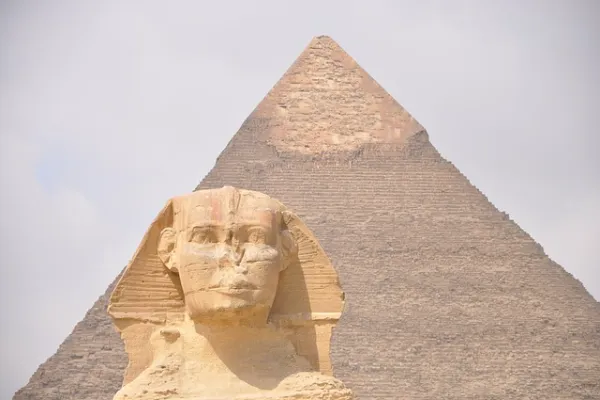
Towering over the sands of time, pyramids stand as testaments to human ingenuity. These colossal structures have ignited the imaginations of people for centuries. Their sheer size is inspiring, but the veil of mystery surrounding their construction adds an extra layer of intrigue. From the engineering feats employed in their creation to the stories they whisper of the past, pyramids are a treasure trove of engaging facts. We will present some fun facts about pyramids that will leave you amazed and eager to learn more about these ancient constructions.
What are some fun facts about pyramids?
- Pyramid pizza party? Not exactly, but the Great Pyramid of Giza is estimated to have taken 2.3 million blocks of stone to build, weighing an average of 2.5 tons each! That’s a lot of building blocks! Imagine the number of deliveries that would take!
- Shining bright: The pyramids were once covered in gleaming white limestone, which reflected the sunlight and made them sparkle like giant jewels. Over time, this outer casing fell away, revealing the yellowish core stones we see today.
- Not all pyramids are Egyptian: While the Egyptian pyramids are the most famous, there are actually pyramids scattered all over the world! Sudan has pyramids too, and there are even pyramids in Central and South America!
- Pharaohes weren’t the only ones in pyramids: Many pyramids were actually built as tombs for important people, not just pharaohs. These pyramids were often smaller than the pyramids built for pharaohs.
- Secret passageways? Legends abound about hidden chambers and secret passageways within the pyramids. While archaeologists have found some hidden rooms and corridors, the true extent of these hidden spaces remains a mystery.
10 Mind-Blowing Facts About Ancient Egyptian Pyramids
- The Great Pyramid of Giza, built for Pharaoh Khufu around 2560 BC, is the largest pyramid in Egypt and one of the Seven Wonders of the Ancient World.
- Pyramids were built as tombs for pharaohs and queens, believed to serve as a passage to the afterlife. The pyramids were filled with treasures and provisions for the afterlife.
- The construction of the pyramids was a massive undertaking, requiring thousands of laborers and skilled craftsmen. The stones used in the construction were quarried and transported from great distances.
- The pyramids were built with precision and accuracy, with the sides aligned to the cardinal points of the compass. The Great Pyramid of Giza is aligned with such precision that it faces true north.
- The construction of the pyramids was not only a monumental feat of engineering but also a testament to the mathematical and astronomical knowledge of the ancient Egyptians.
- The pyramids were built using a technique called “battering,” where the sides of the pyramid slope inwards to create stability and prevent collapse.
- The pyramids were originally covered in smooth white Tura limestone, which reflected the sun‘s rays and made the pyramids shine brightly. Most of this outer casing has since been removed.
- The pyramids were built using a system of ramps and pulleys to lift and move the massive stone blocks. The exact method of construction is still a subject of debate among historians and archaeologists.
- The pyramids were looted and vandalized over the centuries, with treasures stolen and inscriptions defaced. The pyramids were also damaged by earthquakes and erosion.
- Despite their age and the challenges they have faced, the pyramids still stand as a testament to the ingenuity of the ancient Egyptians. They continue to captivate and inspire awe in visitors from around the world.
The Surprising History and Mysteries of the Great Pyramids
Standing tall for over 4,500 years, the Great Pyramids of Egypt are like ancient trophies of human accomplishment. These massive monuments amaze us with their size and intricate design, even though they were built so long ago. But for all the time we’ve spent studying them, many secrets remain hidden. This makes us wonder why they were built and how the Egyptians managed to construct them.
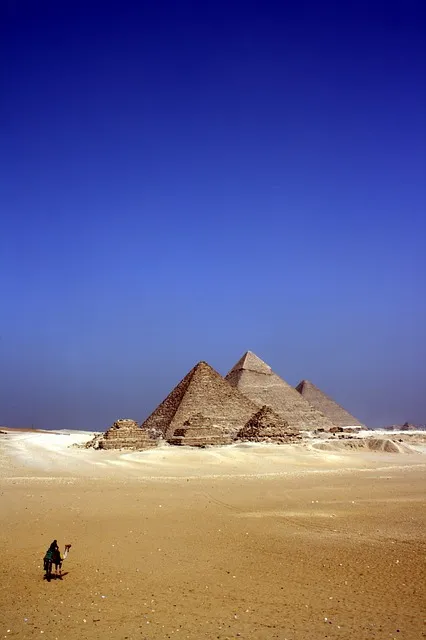
Built around 2600 BC, the largest pyramid, the Great Pyramid of Giza, is dedicated to Pharaoh Khufu. Taking an estimated 20 years to complete, it stood as the world’s tallest building for over 3,800 years, reaching a height of over 450 feet!
One of the biggest mysteries is how they were built. The massive size and perfect fit of the stones make us wonder what tools and methods they used. Some believe the Egyptians used ramps and sleds. Others suggest more advanced technology, but the truth remains a fascinating puzzle.
Even though most believe they were pharaohs’ tombs, the exact purpose of the pyramids remains a mystery. Some think they were used for things like stargazing or even creating energy!
Inside the pyramids, hidden chambers and secret treasures add to the puzzle. Scientists still try to figure out how they built them and what their true purpose was. Maybe future discoveries will unlock the secrets of these amazing structures!
Unbelievable Engineering Feats of the Pyramids: More Fun Facts About Pyramids
Imagine building something massive and amazing, like a giant mountain made of stones, over 4,500 years ago in Egypt! That’s what the Egyptians did with the pyramids. These giant structures are so impressive that even today, people who study engineering are amazed by how well they were built.
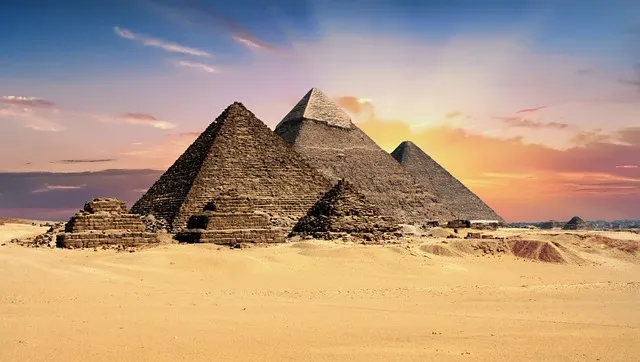
Here’s what makes pyramids so special:
- Size: They’re huge! The biggest one, the Great Pyramid of Giza, is almost as tall as a 50-story building and covers more ground than 13 football fields. It’s made of millions of stone blocks, each weighing as much as a car!
- Accuracy: The stones fit together so perfectly that sometimes there’s barely any space between them, even with our modern tools!
- Direction: They’re lined up almost exactly with north, south, east, and west, which is no easy feat without fancy technology.
The pyramids are a true testament to the incredible skills and knowledge of the ancient Egyptians. They continue to be a source of wonder and inspiration for us today.
We still don’t know exactly how the Egyptians moved those giant stones to build the pyramids! Some scientists think they used ramps, sledges, and levers, but it’s still a mystery.
One thing’s for sure, though: building the pyramids was an incredible feat of engineering, and they continue to amaze us with their size, precision, and alignment even today. Keep reading for more fun facts about pyramids.
Strange and Fascinating Pyramid Facts You Probably Didn’t Know
- The Great Pyramid of Giza is the oldest of the Seven Wonders of the Ancient World, and the only one still largely intact.
- The angle of inclination of the Great Pyramid of Giza is approximately 51 degrees and 50 minutes.
- The Great Pyramid of Giza was originally covered in smooth white Tura limestone casing stones, which reflected the sunlight and made the pyramid shine like a jewel.
- The base of the Great Pyramid of Giza covers an area of 13 acres, with each side measuring approximately 756 feet long.
- The pyramid is aligned with amazing precision to the cardinal points of the compass, with only a slight deviation from true north.
- The construction of the Great Pyramid of Giza is estimated to have taken around 20 years to complete, with an estimated workforce of around 20,000 to 30,000 laborers.
- The interior of the Great Pyramid of Giza contains three main chambers: the King’s Chamber, the Queen’s Chamber, and the Grand Gallery.
- The King’s Chamber contains a granite sarcophagus that was believed to hold the pharaoh’s mummified body, although no remains have ever been found inside.
- The Great Pyramid of Giza was originally covered in hieroglyphics and inscriptions, but these have largely been eroded or removed over the centuries.
- Theories abound as to how the ancient Egyptians were able to construct such a massive structure. Some suggest the use of ramps, pulleys, and levers, while others propose more esoteric explanations involving advanced technology or extraterrestrial intervention.
From Alignment to Measurements: The Science Behind Pyramid Construction
For centuries, people have been amazed by the pyramids’ precise alignment with things in the sky like stars and the sun. This has led some to think that ancient Egyptians were much more advanced than we thought!
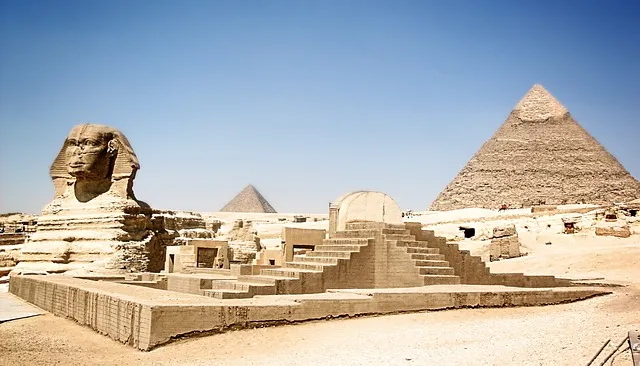
Building the pyramids required incredible skill and planning. The Egyptians used simple tools like plumb bobs and measuring sticks to make sure everything was perfectly straight and aligned. They even had their own special unit of measurement based on the length of an arm! This meticulous attention to detail is part of what makes the pyramids so impressive and mysterious.
Today, scientists use fancy tools like lasers and special cameras to study the pyramids in even more detail. These tools help them see tiny details and understand how the pyramids were built. It’s like putting together a giant, ancient puzzle!
Even with these new tools, there’s still a lot we don’t know about the pyramids. By combining science with the knowledge passed down through generations, we’re slowly uncovering the secrets of pyramids.
Secrets and Legends of the Pyramids Revealed
For centuries, the pyramids have been like giant, mysterious boxes filled with secrets. Recent discoveries and fancy technology are helping us unlock some of these secrets, though!
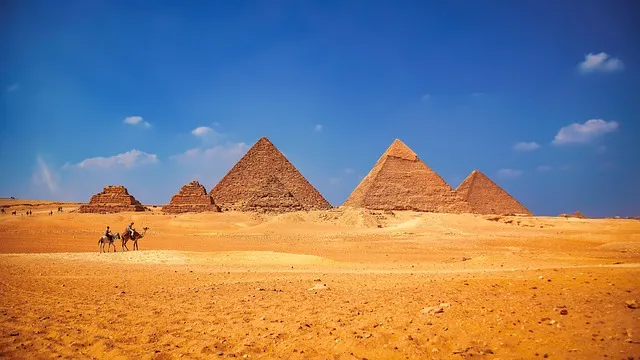
Building the pyramids:
- We used to wonder how they built such massive structures. Now, thanks to digging around the pyramids, we think they used ramps, tools like levers, and lots of skilled workers.
Starry clues:
- The pyramids seem to be lined up with specific stars, like a giant map in the sky. This makes some scientists think they were connected to the heavens or used for special ceremonies.
More than just tombs?
- We used to think they were just burial places for pharaohs. New evidence suggests they might have been used for religious rituals too. Some even believe they have special powers!
While there’s still a lot to learn, these discoveries are helping us understand the pyramids and the amazing people who built them. Even though we’ve learned a lot about the pyramids, there’s still so much we don’t know. Scientists and explorers are still working hard to unlock all their secrets. The pyramids will continue to amaze us for generations to come.
Fun and Quirky Facts About Pyramids Around the World
- The Great Pyramid of Giza, built around 2560 BC, is the oldest and largest of the three pyramids in Giza, Egypt. It is also the only remaining wonder of the ancient world.
- The Pyramid of the Sun in Teotihuacan, Mexico, is the third largest pyramid in the world. It was built around 200 AD by the ancient Mesoamerican civilization.
- The Pyramids of Meroe in Sudan are smaller and steeper than the Egyptian pyramids. They were built by the Kingdom of Kush between 300 BC and 350 AD.
- The Nubian pyramids in Sudan are much smaller than the Egyptian pyramids and were built by the rulers of the Kingdom of Kush between 720 and 300 BC.
- The Pyramid of Djoser in Saqqara, Egypt, is considered the oldest stone building in the world. It was built around 2630 BC for the burial of Pharaoh Djoser.
- The Bent Pyramid in Dahshur, Egypt, gets its name from its unusual shape, with a steep lower section that abruptly changes to a more gradual angle near the top. This change in angle was likely due to structural concerns during construction.
- The Red Pyramid in Dahshur, Egypt, is the third largest pyramid in Egypt and gets its name from the reddish hue of its limestone blocks. It was built by Pharaoh Sneferu around 2600 BC.
- The Pyramid of Khafre in Giza, Egypt, is slightly smaller than the Great Pyramid of Giza but appears taller due to its location on higher ground. It is believed to have been built around 2520 BC.
- The Pyramid of the Magician in Uxmal, Mexico, is a unique step pyramid with rounded corners. It was built by the Mayan civilization around 600 AD.
- The Pyramid of the Moon in Teotihuacan, Mexico, is the second largest pyramid in the city and is believed to have been used for ceremonial purposes by the ancient Mesoamerican civilization.
Conclusion
Pyramids are ancient puzzles that have amazed people for ages. We’re still learning how they were built, what they were used for, and why they’re lined up with the stars. Even though there are still mysteries, these amazing structures show the incredible skills and knowledge of the people who built them so long ago. If you liked our article, Pyramid Power: Fun Facts About Pyramids, keep reading here.